Available 24/7
Available 24/7
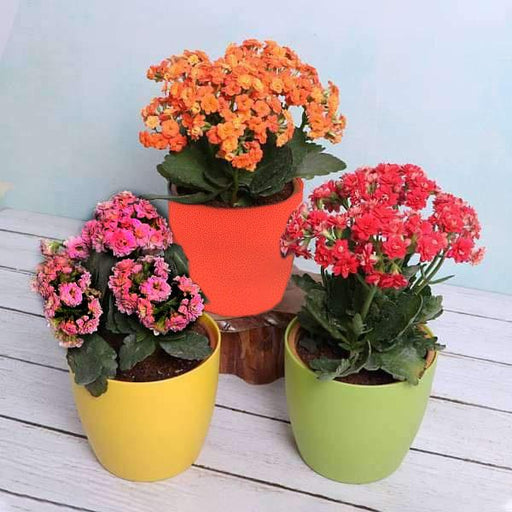
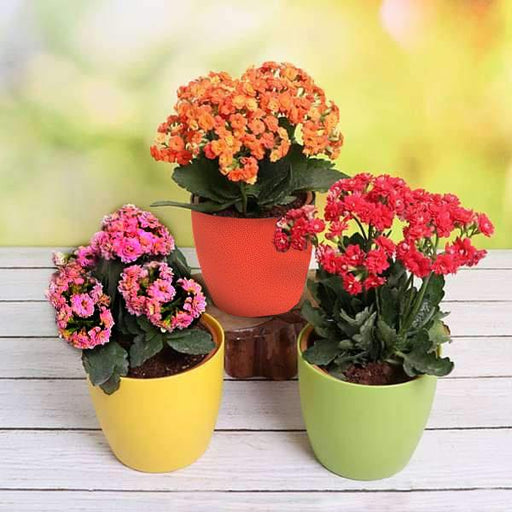 Save 10%
Save 10%
DescriptionThe Kalanchoes are thick leaved elegant flowering succulent houseplants. Make your home garden more vibrant and full of colors by bringi...
View full details Save 18%
Save 18%
DescriptionThis pack contains two 60 cm Spiral Stick Lucky Bamboo Plant + Glass vase + 250g white chip pebbels + 250g black chip pebbels.About Luc...
View full details

DescriptionIf the juvenile foliage along with a more compact plant is preferred, cut off all the climbing stems that develop, this will keep it bus...
View full details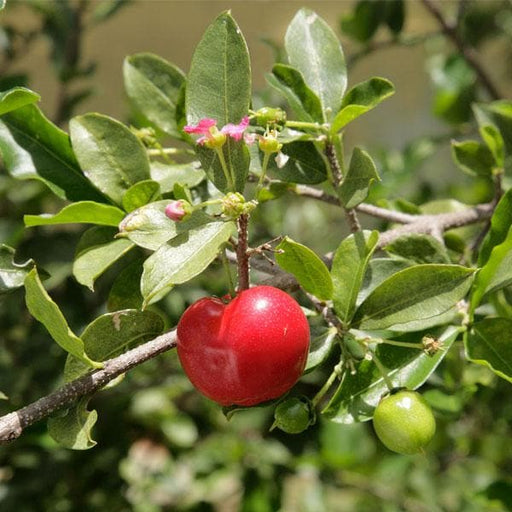 Save 15%
Save 15%
DescriptionGrowing Barbados Cherry is an easy way to add a tropical flair to your garden. When you know its important and how to care for Barbados ...
View full details Save 17%
Save 17%
DescriptionImprove immunity of your all family member by growing a nutritious and vitamin rich an amazing Amla plant. Amla is a small to the medium...
View full details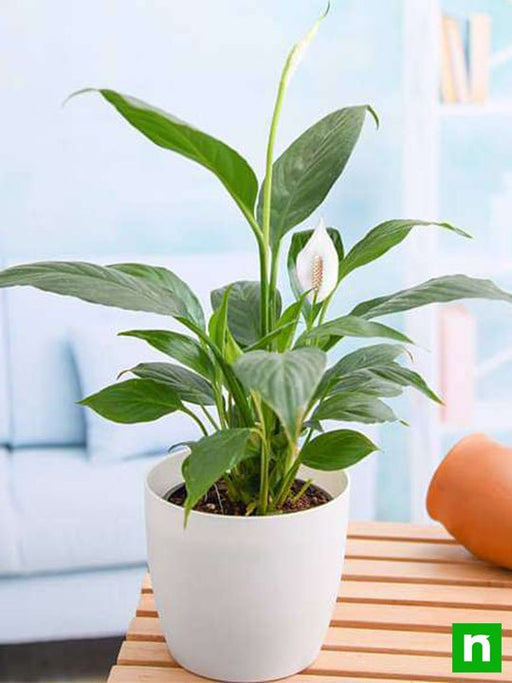
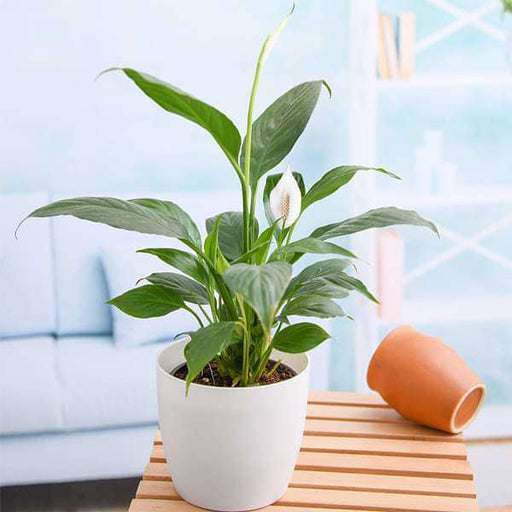 Save up to 15%
Save up to 15%
DescriptionPeace Lily Plant is a very popular and very rare indoor flowering houseplant. It is also an excellent air purifier plant.What makes it s...
View full details
 Save 20%
Save 20%
DescriptionFlowers make intimate connections they increase our connectivity with family and friends. Mogra plant is famously known as Jasmine flowe...
View full details
 Save 10%
Save 10%
DescriptionThe Kalanchoes are thick leaved elegant flowering succulent houseplants. Make your home garden more vibrant and full of colors by bringi...
View full details Save 45%
Save 45%
Description Pack of 4 succulents that are very easy to care for. A perfect pack to start growing plants worry-free. About You get 4 succulent plant...
View full details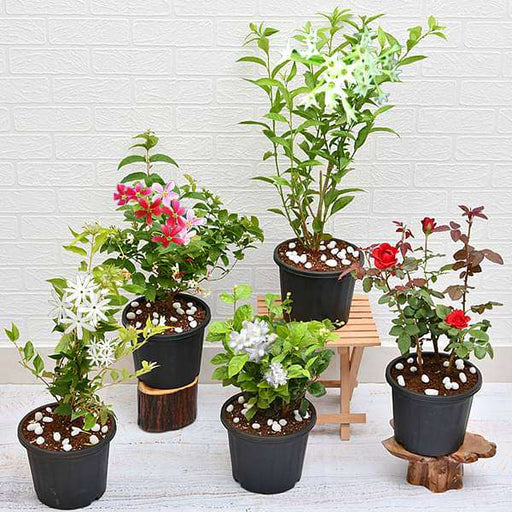 Save 12%
Save 12%
DescriptionAromatic plants bring into a room or house an often overlooked benefit. These plants have a pleasant scent.About You plant a hope when ...
View full details
 Save up to 50%
Save up to 50%
DescriptionIf you long for indoor greenery but have not succeeded with houseplants, consider these beautiful succulents. A perfect pack to start gr...
View full details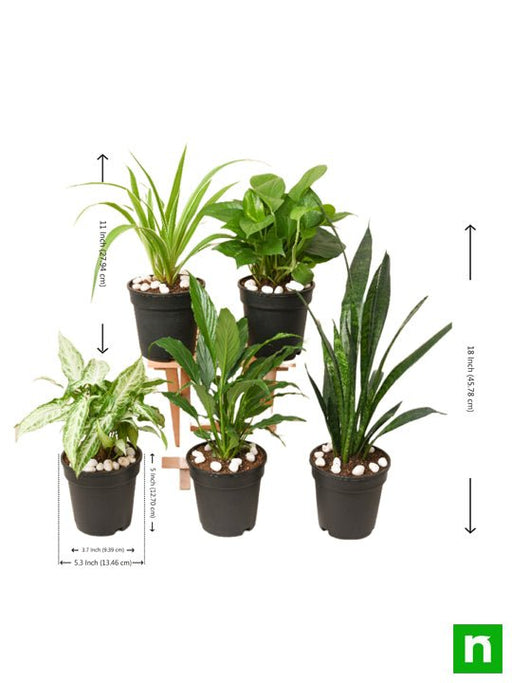
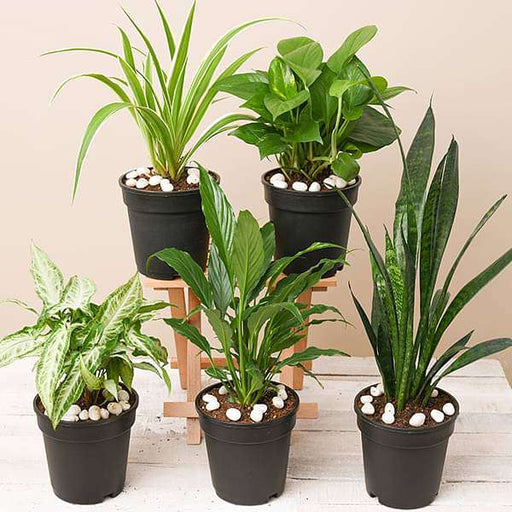 Save 21%
Save 21%
DescriptionThis plants pack contains amazing 5 houseplants + 5 Pots. Surround your home with these best pollution killer plants for a clean and hea...
View full details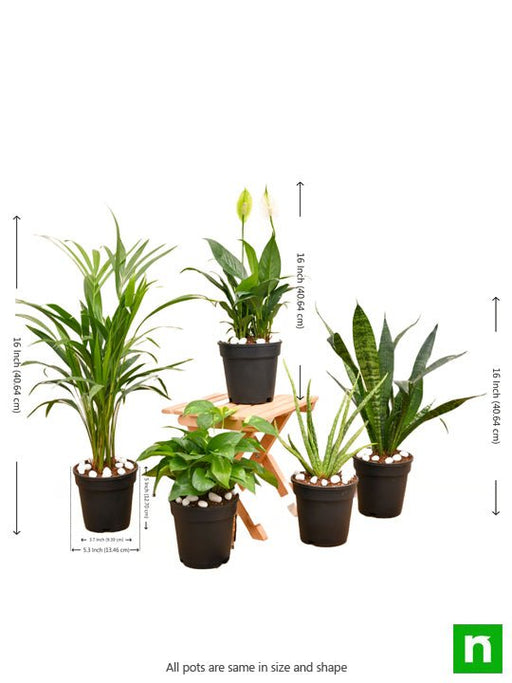
 Save 20%
Save 20%
DescriptionIf you or anyone from your family wants to breathe fresh air, cleaner air in their homes, this 5 plants pack purify the air around and r...
View full details
 Save 40%
Save 40%
DescriptionSet of 2 Bonsai Looking Grafted Adenium PlantsAbout You get 2 Bonsai looking hardy grafted Adenium plants in a single pack.Plants are k...
View full detailsIf you’re looking for a few plants to filter out harmful VOC particles in your home, then NurseryLive’s selection of air purifying plants is a great place to start.
Along with providing you with healthy green plants, we also provide accurate information on caring for them. So, pick up a fresh plant today and breathe a little better!
When it comes to improving the air quality in your home, certain plants can be incredibly helpful. From the peace lily to the snake plant, there are many options to choose from. In this article, we'll take a closer look at the best air purifying plants for your home and how to care for them.
Indoor air can be up to 5 times more polluted than outdoor air, but you can improve the quality of the air in your home by adding indoor air purifying plants. From the spider plant to the rubber plant, there are plenty of options to choose from. In this article, we'll take a closer look at the benefits of indoor air purifying plants and how to care for them.
If you suffer from allergies, adding air purifying plants to your home can help to reduce symptoms by removing airborne pollutants. In this article, we'll take a closer look at the best air purifying plants for allergies, including the Boston fern and the bamboo palm.
Your bedroom should be a sanctuary, but it can be hard to relax if the air quality isn't great. Adding air purifying plants to your bedroom can help to create a more peaceful environment. In this article, we'll take a closer look at the best air purifying plants for the bedroom, including the aloe vera plant and the lavender plant.
If you work in an office, you'll know that the air quality can sometimes be less than ideal. Adding air purifying plants to your workspace can help to create a healthier and more productive environment. In this article, we'll take a closer look at the best air purifying plants for the office, including the English ivy and the spider plant.
If you have pets, you'll want to make sure that the air quality in your home is as good as possible. Certain plants can be toxic to pets, so it's important to choose air purifying plants that are safe. In this article, we'll take a closer look at the best air purifying plants for pets, including the bamboo palm and the spider plant.
If you live in a small apartment or have limited space, adding air purifying plants can be a challenge. But there are plenty of options that are perfect for small spaces. In this article, we'll take a closer look at the best air purifying plants for small spaces, including the snake plant and the spider plant.
Bathrooms can be a breeding ground for mold and mildew, which can be harmful to your health. Adding air purifying plants to your bathroom can help to reduce the growth of these harmful substances. In this article, we'll take a closer look at the best air purifying plants for the bathroom, including the peace lily and the bamboo palm.
Not all plants need a lot of sunlight to thrive, and there are plenty of air purifying plants that can survive in low light conditions. In this article, we'll take a closer look at the best air purifying plants for low light, including the snake plant and the peace lily.
If you're looking to create a healthier home environment, adding air purifying plants can be a great start. In this article, we'll take a closer look at the best air purifying plants for
Living in a city with high levels of pollution can have a negative impact on your health, but adding air purifying plants to your home can help to reduce the effects. In this article, we'll take a closer look at the best air purifying plants for high pollution areas, including the rubber plant and the Boston fern.
If you're new to indoor gardening, choosing the right air purifying plants can be overwhelming. In this article, we'll take a closer look at the best air purifying plants for beginners, including the spider plant and the snake plant, and provide tips on how to care for them.
In addition to traditional houseplants, there are also many herbs that can help to purify the air in your home. In this article, we'll take a closer look at air purifying herbs such as basil, mint, and sage, and how to incorporate them into your home.
If you're having trouble sleeping, adding air purifying plants to your bedroom can help to create a more relaxing environment. In this article, we'll take a closer look at the best air purifying plants for better sleep, including the snake plant and the lavender plant.
According to the principles of Feng Shui, certain plants can help to promote positive energy and improve air quality in your home. In this article, we'll take a closer look at air purifying plants that are recommended by Feng Shui practitioners, including the peace lily and the bamboo palm, and how to incorporate them into your home decor.
Indoor air quality in classrooms can affect students' health and academic performance. Adding air purifying plants to classrooms can help to improve the air quality and create a more conducive learning environment. In this article, we'll take a closer look at the best air purifying plants for classrooms, including the spider plant and the English ivy.
In addition to homes and classrooms, air purifying plants can also be added to workplaces to create a healthier and more productive environment. In this article, we'll take a closer look at the best air purifying plants for clean workplaces, including the rubber plant and the golden pothos.
Studies have shown that indoor plants can have a positive impact on mental health and well-being. In this article, we'll take a closer look at air purifying plants that can help to improve mental health, including the Boston fern and the peace lily.
In addition to improving air quality and promoting health, air purifying plants can also boost productivity in the workplace. In this article, we'll take a closer look at the best air purifying plants for better productivity, including the snake plant and the spider plant.
In addition to their air purifying benefits, indoor plants can also add a touch of natural beauty to your home decor. In this article, we'll take a closer look at air purifying plants that can serve as natural home decor, including the fiddle leaf fig and the monstera deliciosa. We'll also provide tips on how to care for these plants to keep them thriving.
Air purifying plants are plants that have been shown to remove harmful pollutants and toxins from the air, improving air quality in the process. They do this by absorbing these pollutants through their leaves and roots and converting them into harmless substances.
Some examples of air purifying plants include the peace lily, spider plant, snake plant, golden pothos, and bamboo palm. Each of these plants has been shown to effectively remove pollutants from the air.
Air purifying plants improve air quality by absorbing harmful chemicals and pollutants through their leaves and roots. These pollutants can come from a variety of sources, including cleaning products, furniture, and air pollution. Once the plants absorb these pollutants, they convert them into harmless substances, improving the air quality in the process.
Yes, many air purifying plants can be grown in India, provided the right growing conditions are provided. These plants typically thrive in bright, indirect sunlight and well-draining soil. Some popular air purifying plants in India include the spider plant, snake plant, and money plant.
Some popular air purifying plants in India include the spider plant, snake plant, money plant, and peace lily. These plants have been shown to effectively remove pollutants from the air, improving air quality in the process.
The number of air purifying plants needed for a home depends on factors such as the size of the space, the number of occupants, and the level of pollution in the surrounding area. As a general rule, it's recommended to have at least one air purifying plant for every 100 square feet of space.
Air purifying plants typically require bright, indirect sunlight but can tolerate low-light conditions. Some plants, such as the snake plant and peace lily, can even grow in low-light conditions and are well-suited for areas without much natural light.
Air purifying plants typically need well-draining soil that is rich in organic matter. A good quality potting mix or a mix of garden soil and sand can work well for these plants. It's important to avoid overwatering these plants, as this can lead to root rot and other issues.
The watering frequency for air purifying plants varies depending on the plant species, pot size, and environmental conditions. As a general rule, it's better to underwater than overwater air purifying plants. It's recommended to water these plants once a week or when the soil is dry to the touch.
Air purifying plants do not typically require much fertilizer. Too much fertilizer can lead to overgrowth and damage to the plant. Fertilizing every 2-3 months with a balanced, all-purpose fertilizer can help maintain the plant's health and growth.
Yes, many air purifying plants can be grown indoors, making them a popular choice for improving air quality in homes and offices. These plants typically thrive in bright, indirect sunlight and well-draining soil.
Yes, air purifying plants have been shown to have a variety of health benefits. They can help reduce stress levels, improve concentration, and boost mood. Additionally, they can improve air quality by removing harmful pollutants from the air.
You can tell if your air purifying plant is working by monitoring the air quality in your home or office. You can use an air quality monitor to measure the levels of pollutants in the air. Over time, as the plant removes pollutants from the air, you should see a decrease in the levels of these pollutants.
While air purifying plants can remove many pollutants from the air, they are not able to remove all pollutants. Some pollutants, such as carbon monoxide and radon, require specialized equipment to remove from the air.
While air purifying plants are generally safe and beneficial, some people may experience allergic reactions to certain plant species. Additionally, overwatering these plants can lead to mold growth and other issues.
Yes, air purifying plants can help with allergies by removing allergens from the air, such as dust, pollen, and mold spores. However, some people may be allergic to certain plant species, so it's important to choose plants that are not allergenic to you.
Air purifying plants may help with asthma by removing pollutants from the air that can trigger asthma attacks. However, it's important to note that not all asthma triggers are airborne, so air purifying plants may not be a complete solution for asthma management.
To care for your air purifying plants, make sure to provide them with adequate sunlight, well-draining soil, and proper watering. You should also keep an eye out for pests and diseases, and take steps to prevent them from affecting your plants.
Yes, many air purifying plants can be propagated through stem cuttings or division. This is a great way to create new plants and expand your collection.
Yes, many air purifying plants can be used for outdoor landscaping, provided the right growing conditions are provided. These plants typically thrive in bright, indirect sunlight and well-draining soil.
Air purifying plants can vary in price depending on the species and size of the plant. However, many popular air purifying plants, such as the snake plant and spider plant, are relatively inexpensive and widely available.
The lifespan of air purifying plants varies depending on the species and growing conditions. Some plants, such as the spider plant, can live for several years with proper care.
Yes, air purifying plants are often used in offices to improve air quality and boost productivity. They can be a great addition to any workspace.
Air purifying plants can help with productivity by improving air quality and reducing stress levels. This can lead to improved concentration and a more positive work environment.
Yes, air purifying plants can be used in hospitals to help improve air quality and create a more calming environment for patients and staff.
Some air purifying plants can be toxic to pets, so it's important to choose pet-friendly plants if you have pets in your home. Some pet-friendly air purifying plants include the spider plant, bamboo palm, and money plant.
Yes, air purifying plants can be used to improve sleep quality by removing pollutants from the air and creating a more relaxing environment. Some plants, such as lavender and jasmine, are also known for their calming properties and can help promote restful sleep.
Yes, air purifying plants can be used to reduce stress levels by improving air quality and creating a more calming environment. Some plants, such as the peace lily and snake plant, have also been shown to have stress-reducing properties.
Yes, air purifying plants can be used to improve mental health by creating a more positive and calming environment. Studies have shown that exposure to nature and greenery can have a positive impact on mental health and well-being.
Air purifying plants can help improve indoor air quality during wildfires by removing pollutants from the air. However, it's important to note that air purifying plants are not a substitute for proper air filtration and ventilation during wildfires, and it's important to follow guidelines and recommendations from local health authorities.